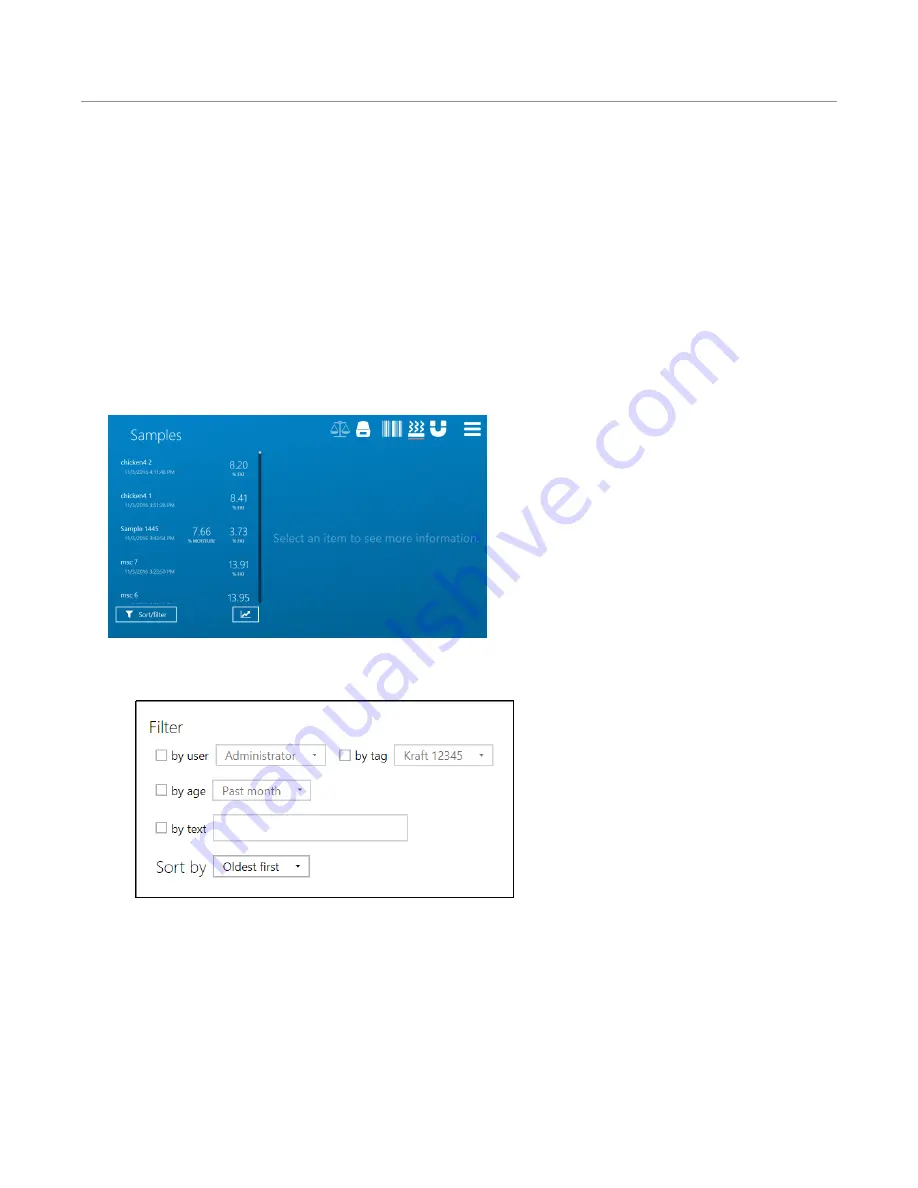
47
Data Management
Data Management
Every ORACLE is equipped with a variety of options to store and review data. It comes equipped with an internal
database which can store a large number of results that can be recalled and analyzed as needed by the user. Data
can also be sent to different external databases, or LIMS networks. Furthermore, results from the ORACLE can be
statistically analyzed and provide result averages, standard deviations, and production trends and graphs quickly
and easily.
Internal Data Management
The ORACLE has the ability to store data for further review. In order to find specific data points more easily, the
users has the ability to sort and filter results based on the user, the sample ID or tag, or the time and date of
analysis.
1.
Select the “Main Menu” icon followed by the Samples tab. A list of every sample that has been analyzed on
the ORACLE will appear. A quick search of samples is listed on the left of the screen, and further details about
each individual test will appear on the right as the sample is chosen.
2.
From this screen, the user can:
• Sort/Filter Results - Select the “Sort/filter” button to expedite the process of finding specific samples.
• Generate and display statistical analysis on results - Select the “Statistics” button to produce statistical
analyses such as Average, Range, Minimum and Maximum, and Standard Deviation. The ORACLE will also
display a Statistical Process Control chart on which the user can set upper and lower spec limits to ensure
that all results are within the acceptable specification for that product.






























